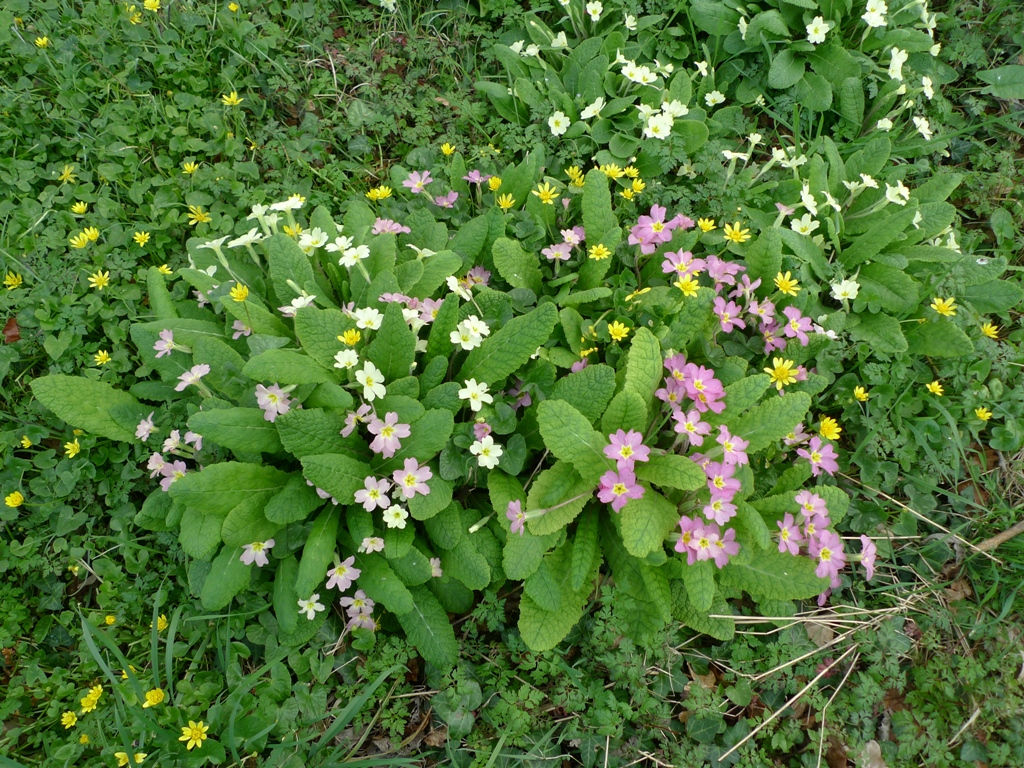
The Primroses and Cowslips have been in flower for quite a while now, they are a welcome sign of spring! Many in this family are attractive enough as a garden plant but I will also write about any other uses.
There are 5 known genera with several species in most genera:
- Primula spp.
- Hottonia palustris or Water-violet
- Lysimachia spp.
- Cyclamen spp.
- Samolus valerandi or Brookweed
Pictures by Mike Poulton, Matt Summers, Rudi Pilsel, Andy Purcel, Simon Atkinson, Chris Westhall and Wikipedia.
Sources of information from Plant Atlas Online (information about habitat), Wikipedia, Plants for a Future (PFAF) and other websites. Links are given. Large size names are plants which are native. The small size names are neophytes or archeophytes.
In the Contents, behind the name FBBC is added if the plant in question occurs in the Flora of Birmingham and the Black Country.
Medicinal Uses are given according to the Medicinal Flora of Britain and Northwestern Europe by Julian Barker. But take note that this is an educational blog and not a herbal self-help guide!!
Contents:
Primula native species are:
Primula vulgaris or Primrose FBBC
P. veris or Cowslip fbbc
Medicinal Uses according to the Medicinal Flora of Britain and Northwestern Europe by Julian Barker.
P. elatior or Oxlip fbbc
P. farinosa or Bird’s-eye Primrose
P. scotica or Scottish Primrose
P. × polyantha (Primula veris × vulgaris) or False Oxlip fbbc
Primula ‘neophytes’ or garden escapes are:
- P. auricula or Auricula
- P. florindae or Tibetan Cowslip
- P. japonica or Japanese Cowslip
- Primula pulverulenta or Mealy Cowslip
- Primula sikkimensis or Sikkim Cowslip
- P. x pruhoniciana (P. vulgaris x P. juliae) or Hybrid Primrose FBBC
Hottonia palustris or Water-violet FBBC
Lysimachia: native species are:
L. arvensis s.l. (was Anagallis arvensis)or Scarlet Pimpernel FBBC
L. europaea (was Trientalis europaea)or Chickweed-wintergreen
L. maritima (was Glaux maritima) or Sea-milkwort
L. minima (was Centunculus minimus) or Chaffweed
L. nemorum or Yellow Pimpernel FBBC
L. nummularia or Creeping-Jenny FBBC
L. tenella (was Anagallis tenella) or Bog Pimpernel FBBC
L. thyrsiflora or Tufted Loosestrife
L. vulgaris or Yellow Loosestrife FBBC
Lysimachia ‘neophytes’ and ‘archaeophyte’ are:
- L. ciliata or Fringed Loosestrife FBBC
- L. foemina (was Anagallis arvensis ssp. foemina) or Blue Pimpernel (archaeophyte in B.I.; neophyte in Ireland)
- L. punctata or Dotted Loosestrife FBBC
- L. terrestris or Lake Loosestrife
Cyclamen:
- Cyclamen coum or Eastern Sowbread
- Cyclamen hederifolium or Sowbread FBBC
- Cyclamen repandum or Spring Sowbread
Samolus valerandi or Brookweed
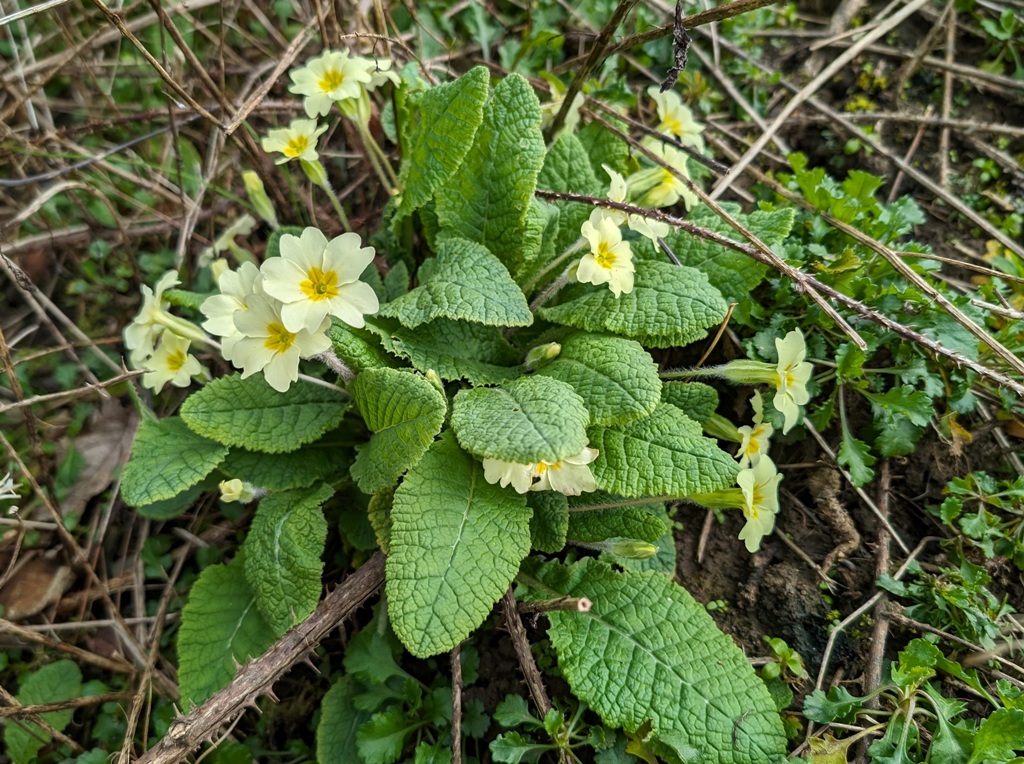
Primula vulgaris or Primrose
An evergreen, or sometimes aestivating, perennial herb typical of sites shaded from hot sun, found in woodland, on north-facing banks, in hedgerows, coastal slopes and shaded montane cliffs.
The flowers of the species are visited by a variety of insects, such as butterflies (Lepidoptera), Hymenoptera, beetles (Coleoptera) and Diptera. Which visitors pollinate plants is not fully established. However, good pollinators are said to be bumblebees and hairy flies of the genus Bombylius. However, the most common visitors to the flowers are small beetles of the genus Meligethes – often there are up to 12 or more pollen-covered individuals in a single flower. The beetles also fly from flower to flower and, at least theoretically, are well suited as pollinators.
The seeds have an elaiosome and are spread by ants (myrmecochory).
The wild primrose is a staple of cottage garden plantings, and is widely available as seeds or young plants. It grows best in moist but well-drained soil in light shade. It is increased by seed and division. The throat is usually coloured rich yellow.
AGM cultivars
The following have received the Royal Horticultural Society‘s Award of Garden Merit:
- Primula vulgaris
- Primula vulgaris subsp. sibthorpii (Sibthorp primrose)
- Primula vulgaris subsp. vulgaris
- Primula vulgaris ‘Taigetos’
Both flowers and leaves are edible, the flavour ranging between mild lettuce and more bitter salad greens. The leaves can be cooked in soup but preferably with other plants because they are sometimes a little strong. The leaves can also be used for tea, and the young flowers can be made into primrose wine.
In the past the whole plant and especially the root were considered to have analgesic, anti-spasmodic, diuretic and expectorant properties. It contains small amounts of saponins, and was given for colds. P. vulgaris foliage contains significant amounts of vitamin C.
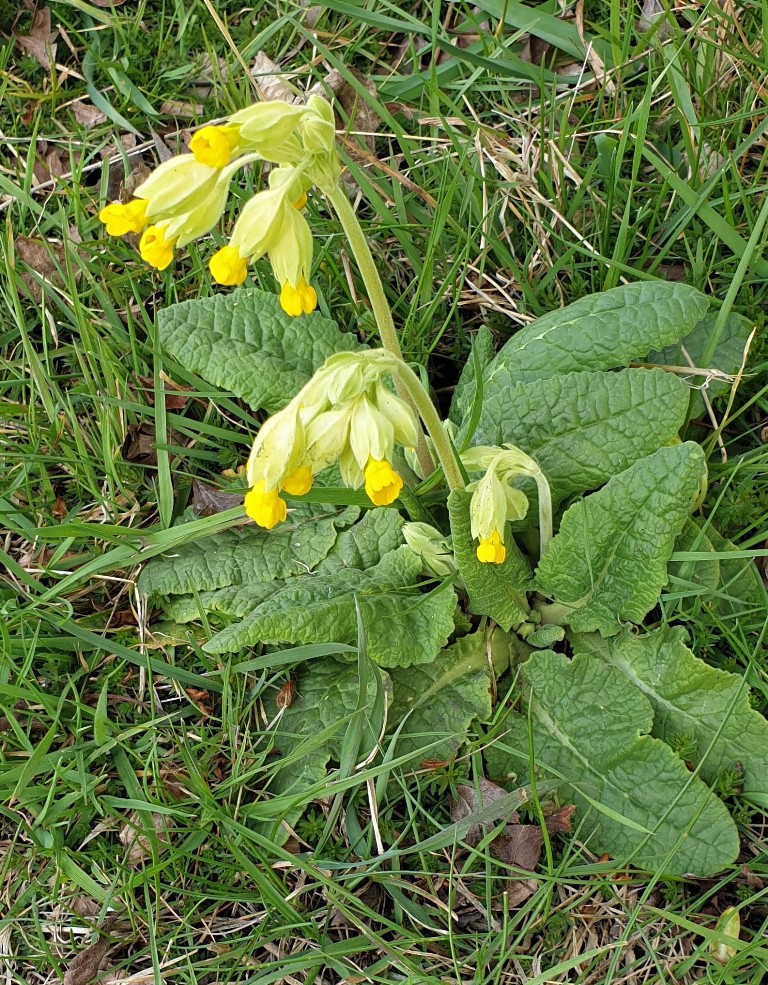
P. veris or Cowslip
A perennial herb of well-drained, herb-rich grasslands on mesic to calcareous soils; less commonly on seasonally flooded soils, in scrub or woodland rides and edges, and on calcareous cliffs.
The species name veris (‘of spring’, referring to the season) is the genitive case form of Latin ver (‘spring’). However, primrose P. vulgaris, flowers earlier, from December to May in the British Isles.
P. veris suffered a marked decline between 1930 and 1980 due to the ploughing or agricultural improvement of grassland. Recently, however, it has become much more frequent on new road verges sown with wild-flower mixtures.
In cultivation this plant has gained the Royal Horticultural Society‘s Award of Garden Merit.
The cowslip may be confused with the closely related oxlip (see below) which has a similar general appearance and habitat, although the oxlip has larger, pale yellow flowers more like a primrose, and a corolla tube without folds.
Medicinal Uses according to the Medicinal Flora of Britain and Northwestern Europe by Julian Barker:
The flower is used for insomnia, headache, migraine, restlessness and excitability. Anxiety associated with irritability. Cramps.
The root is used for irritable cough, whooping cough, tracheitis and bronchitis. Also for rheumatism and compresses may help for bruising.
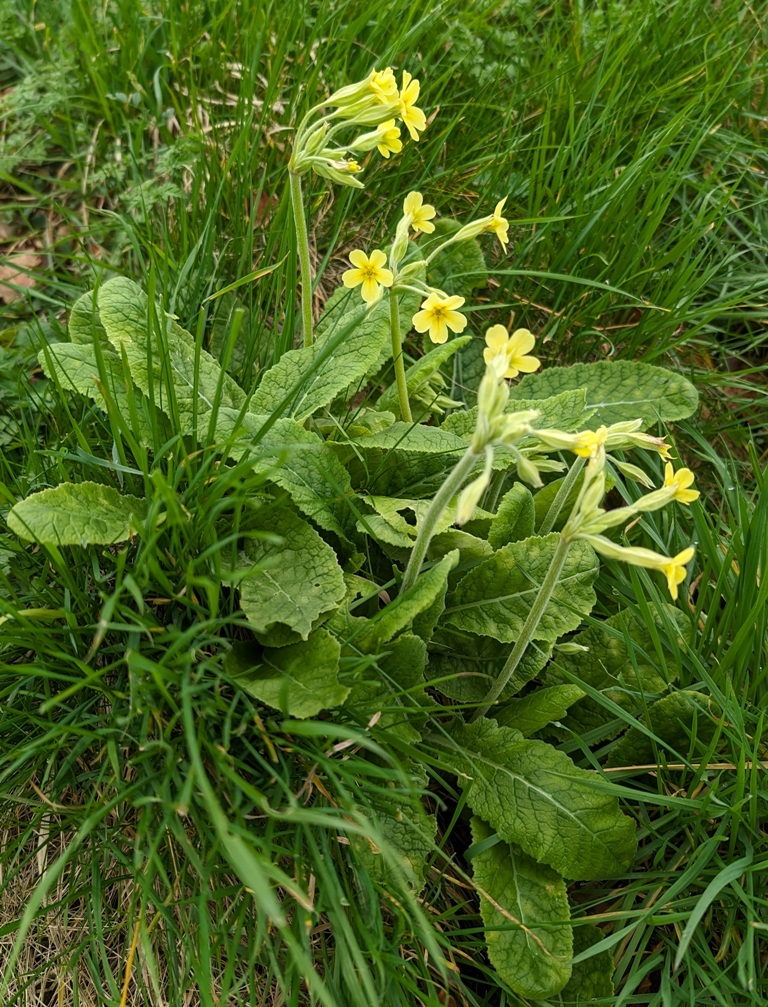
P. elatior or Oxlip
A perennial herb of woodlands dominated by Acer campestre, Corylus avellana, Fraxinus excelsior and Quercus robur on damp chalky boulder-clay soils, especially where seasonal flooding occurs; rarely in wet Alnus glutinosa woods, damp meadows and ancient hedgerows.
Primula elatior is cultivated as a garden plant. It may be used in informal settings such as wildflower meadows. It has won the Royal Horticultural Society‘s Award of Garden Merit.
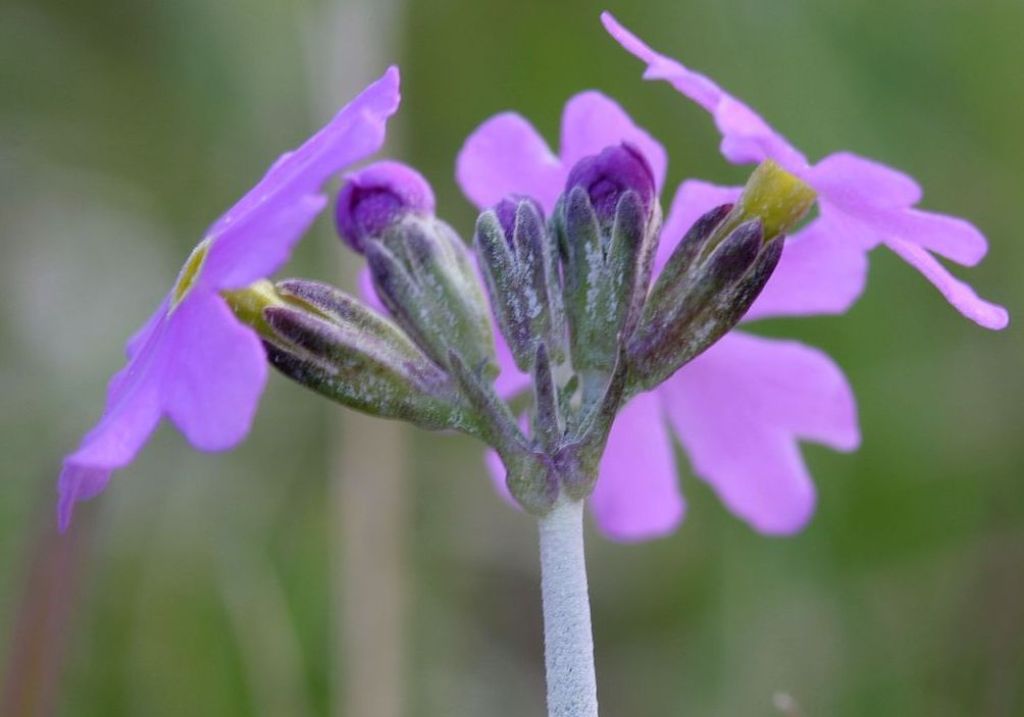
P. farinosa or Bird’s-eye Primrose
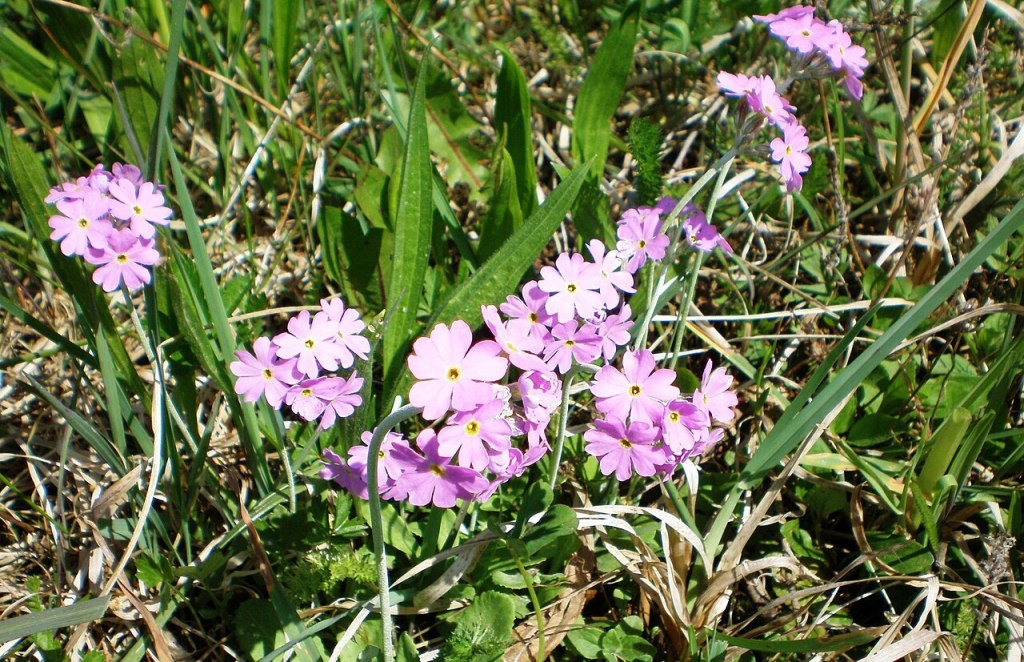
P. farinosa or Bird’s-eye Primrose
A short-lived perennial herb of wet, usually spring-fed, calcareous flushes and mires amongst limestone grassland. It is often found on hummocks in springs, and on seeping banks where slippage has opened up the turf, most commonly on open marl. A few sites remain in unimproved, grazed, damp pasture, where it often fails to flower due to heavy grazing pressure, or on the floor of abandoned limestone quarries. It perennates as resting-buds and reproduces by seed.
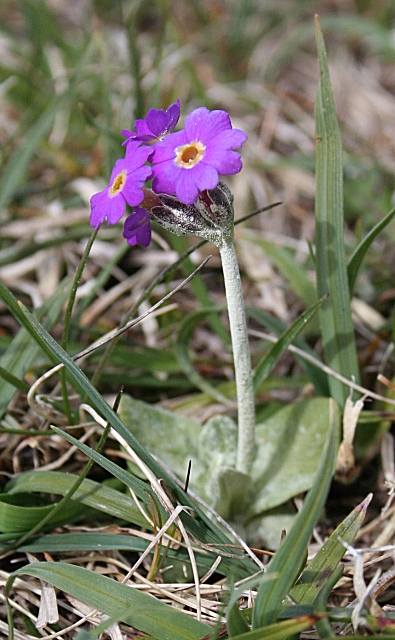
P. scotica or Scottish Primrose
A perennial herb of moist but well-drained, usually heavily grazed, open grassland habitats near the sea, often calcareous and sometimes liable to some sand accretion.
P. scotica can only reproduce from seed. It comes into flower twice each year, the first flowering takes place in the early spring and the second in the summer, however, some plants do not flower. Reproduction is normally through self-fertilisation but when the plants are cross-pollinated by insects this can lead to longer-lived more vigorous plants.
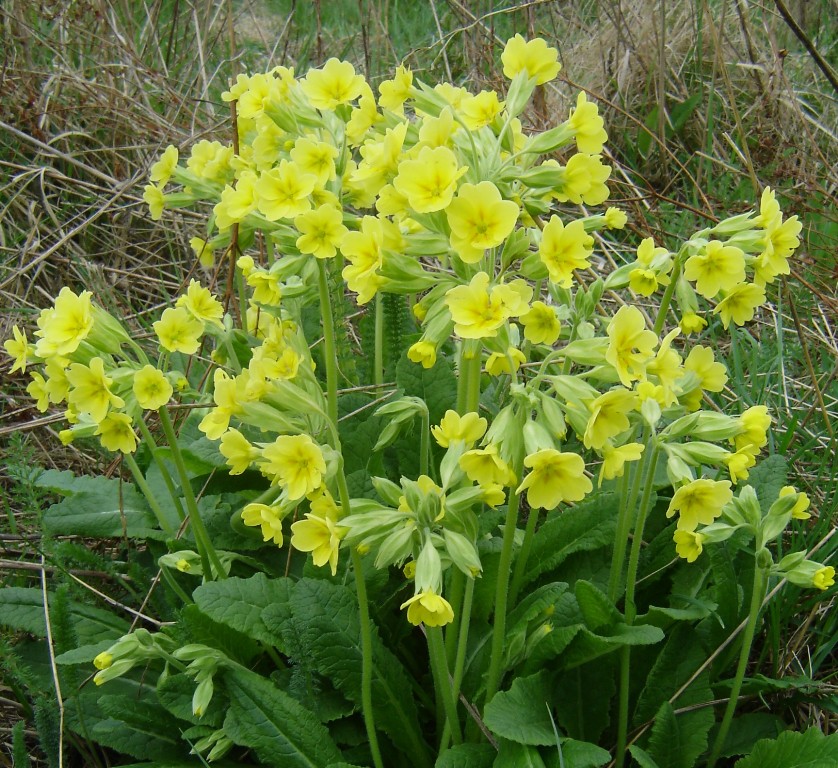
P. × polyantha (Primula veris × vulgaris) or False Oxlip
Although the parents of this hybrid have different ecological requirements they are often found in close proximity. Naturally occurring hybrids (including back-crosses) may be found at ecotones such as woodland rides, clearings and edges, in scrub, hedgerows and on roadside verges. In western Britain, where P. vulgaris is more frequently found in the open, the hybrid is often found in meadows and coastal grassland, and in Ireland it is particularly frequent in the Burren (County Clare).
Much breeding work has been done to provide the garden with many colour variations.
Primula ‘neophytes’ or garden escapes are:
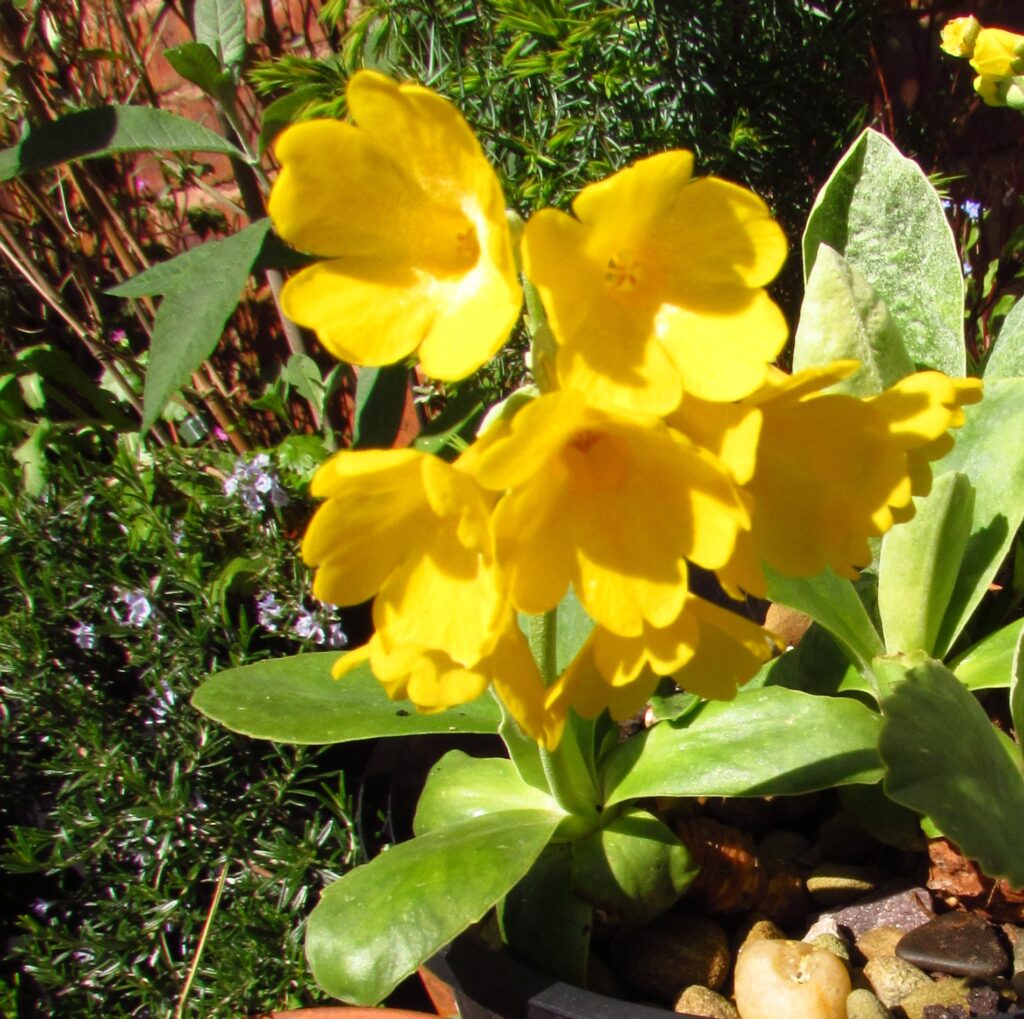
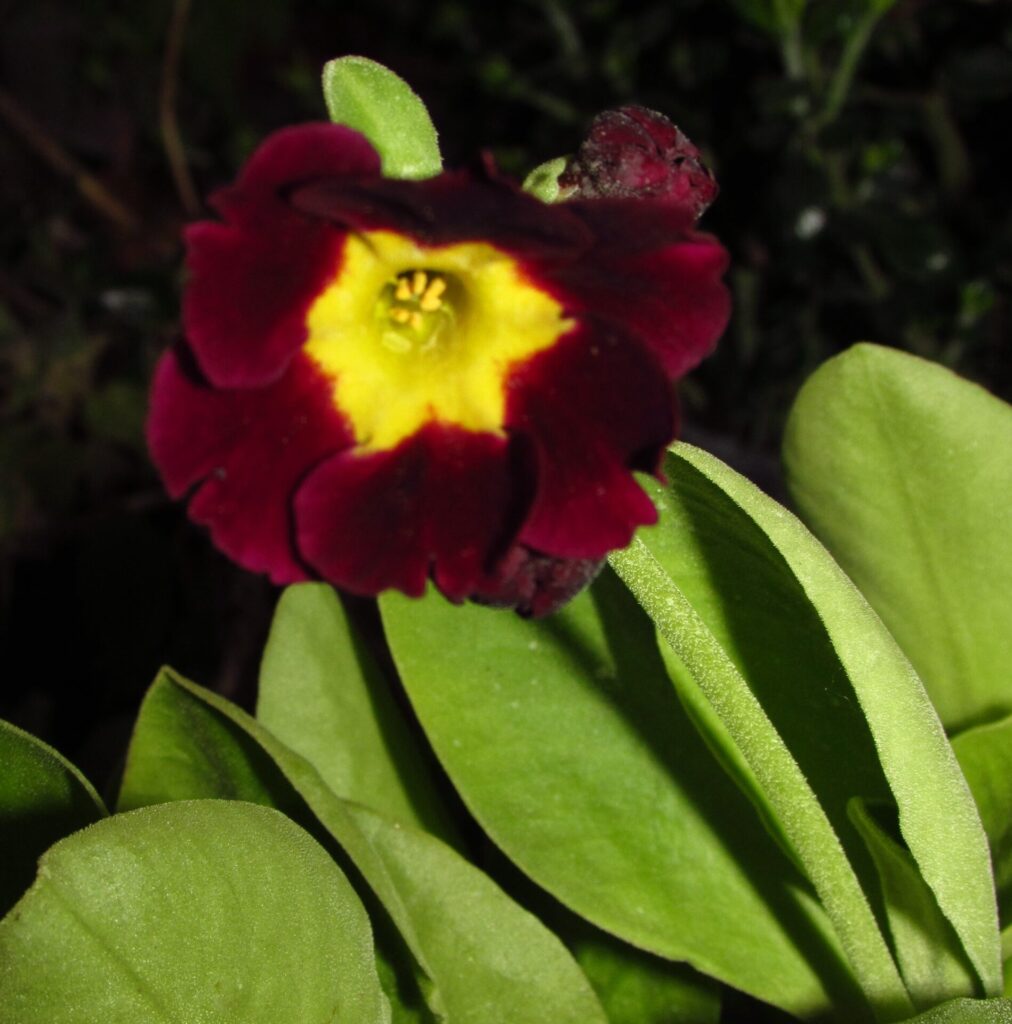
Two examples of home-grown Primula auricula or Auricula (by Matt Summers)
This plant has gained the Royal Horticultural Society‘s Award of Garden Merit.
In the UK two National Collections of auriculas are held by Hillview Hardy Plants nursery, on a 1 acre (0.4 ha) plot in Worfield, Shropshire.
This plant has long been used in central Europe as a cough medicine.
Other attractive ‘garden escapes’ are:
- P. florindae or Tibetan Cowslip
- P. japonica or Japanese Cowslip
- P. pulverulenta or Mealy Cowslip
- P. sikkimensis or Sikkim Cowslip
- P. x pruhonicensis (P. vulgaris x P. juliae) or Hybrid Primrose FBBC
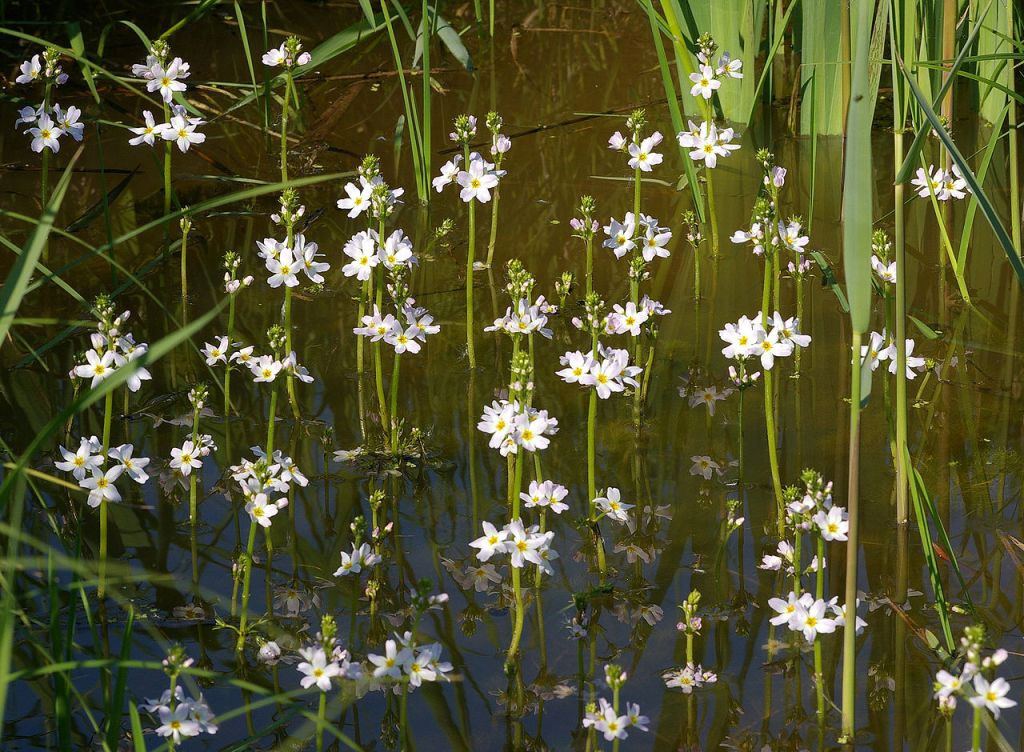
Hottonia palustris or Water-violet
A stoloniferous perennial herb of still, shallow, base-rich, clear and not eutrophicated water bodies, including ponds, ditches, ox-bows, pingos and backwaters. It is especially characteristic of grazing marshes and other coastal and floodplain landscapes with drainage channel networks. It can withstand shade and temporary drying out. It is heterostylous, requiring crosses between pins and thrums to set seed; vegetative growth often produces single-morph colonies that set little seed.
Lysimachia native species are:
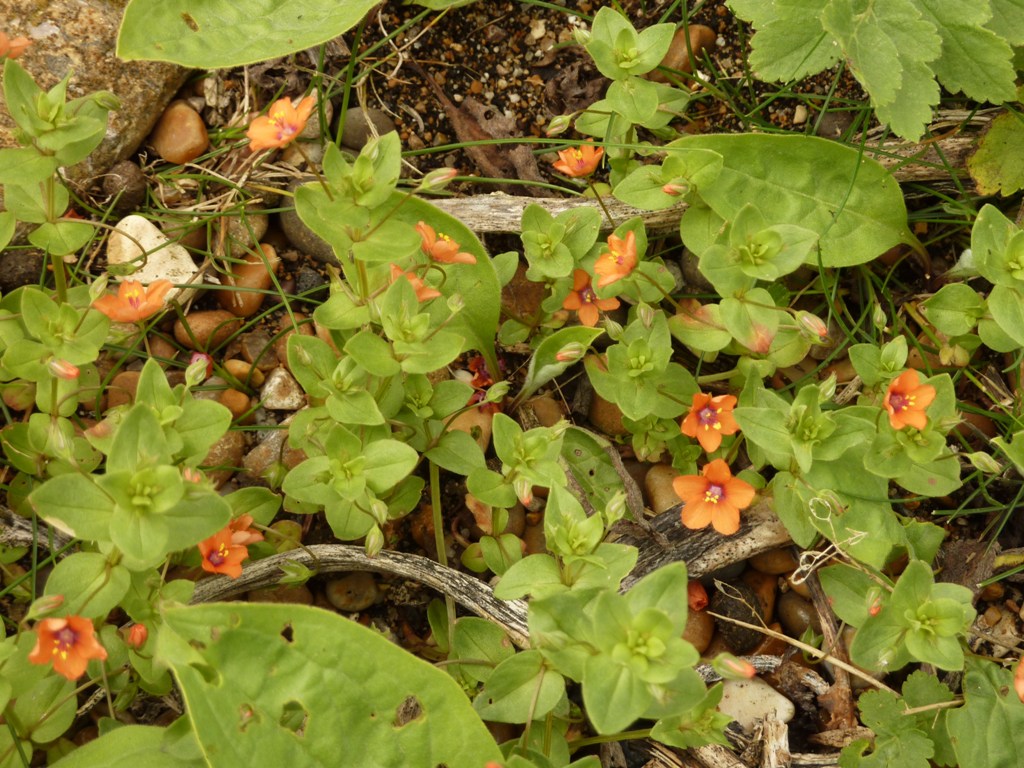
L. arvensis s.l. (was Anagallis arvensis) or Scarlet Pimpernel
A winter-annual or, occasionally, a short-lived perennial, common in open habitats as an arable or garden weed, and also growing around rabbit warrens and in rocky and bare sites including coastal cliffs, chalk downland, heathlands, sand dunes and waste ground.
In various countries plant material has been applied externally to slow-healing ulcers and wounds. It also has been applied as an expectorant and as a remedy for pruritus, rheumatism, haemorrhoids, rabies, leprosy, and snake-bite. Anagallis has been used in treatment of non-specified types of phthisis, and of kidney-related conditions such as dropsy and chronic nephritis. It was used as an antidepressant in ancient Greece, and to treat various mental disorders in European folk medicine, leading to the German name Gauchheil (Gauch meaning ‘fool, cuckoo’ and heil meaning ‘heal’). Generally however, documented evidence for clinical efficacy is lacking. It is traditionally known by pharmacists as Arvensis Herba.
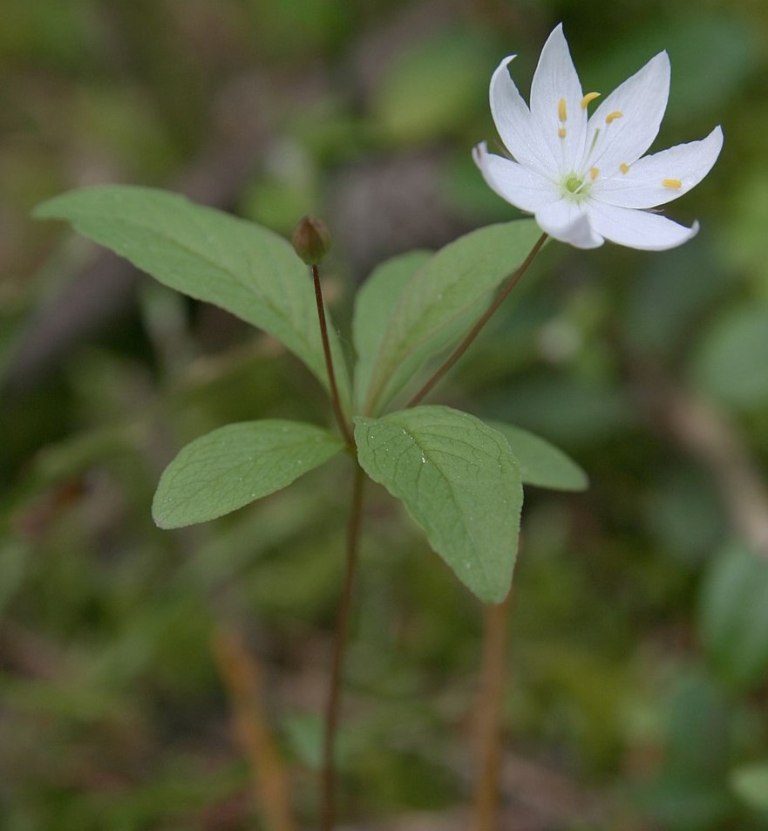
L. europaea (was Trientalis europaea) or Chickweed-wintergreen
A deciduous perennial herb of moist, acidic and humus-rich, but often fertile, soils in birch, oak and pine woodland and under tall Calluna vulgaris on moorland; less commonly on heaths. It is highly localized, colonies often being separated by much apparently suitable ground. Seed-set is rare, most colonization being due to vegetative growth. It is a good competitor, often thriving under bracken and heather, but a poor colonist.
The flower is the provincial flower of the Värmland province in Sweden and the “county flower” of Nairn
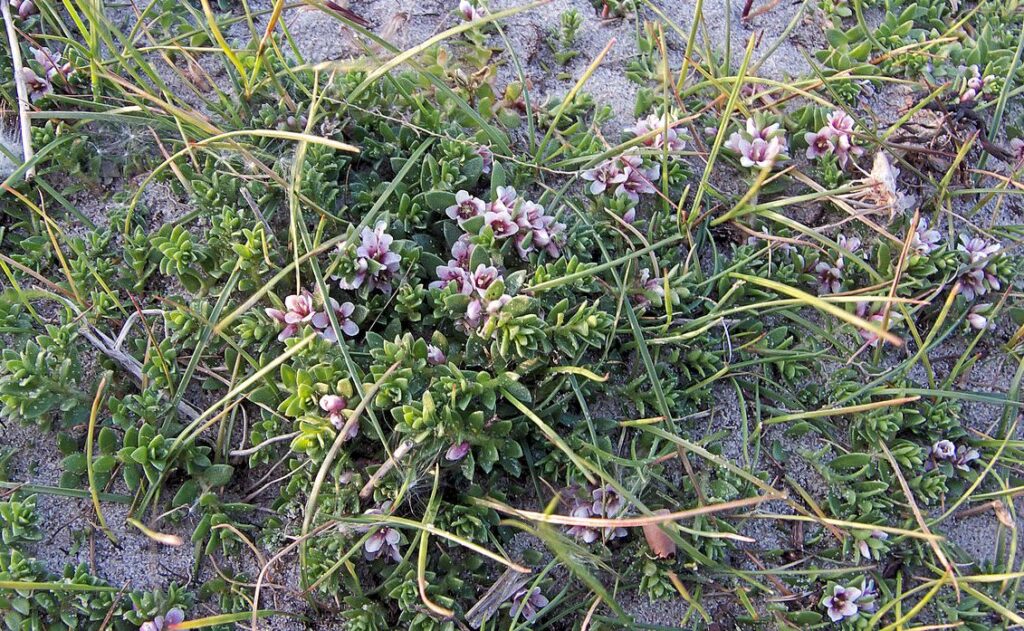
L. maritima or Sea-milkwort (was Glaux maritima)
A perennial herb typically forming dense colonies on moist saline soils. Its habitats include saltmarshes, strandlines, damp shingle, wet sand, brackish dune-slacks, aerobic mud and spray-drenched rock crevices. More rarely it occurs by brackish ditches away from tidal water and in inland saltmarshes by brine springs on Triassic saliferous rocks. It is a poor competitor which often forms pure stands, but also grows in open communities with other halophytes. It is a very occasional component of inland roadside halophyte communities.
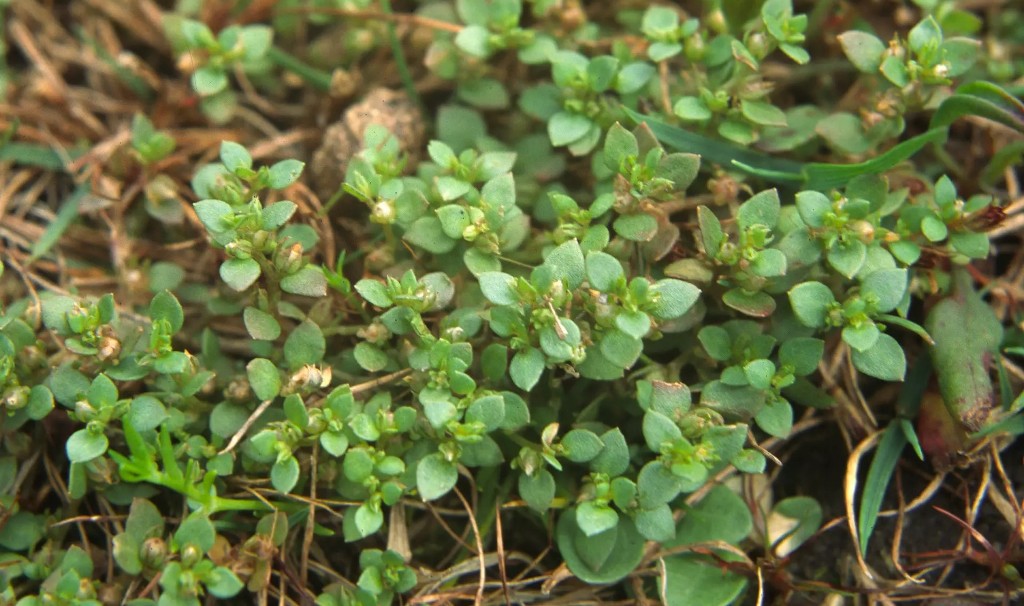
L. minima (was Centunculus minimus) or Chaffweed
An annual of open places on damp, sandy sites, often near the sea and usually on acidic soils. Habitats include sand dunes, sandy cliffs, along paths and tracks on heathland, and in forest rides. Recently, it has been recorded as part of the roadside halophyte community, particularly in north-western Scotland and western Ireland (Amphlett, 2020). It is a poor competitor which suffers where grazing is relaxed and general disturbance ceases.
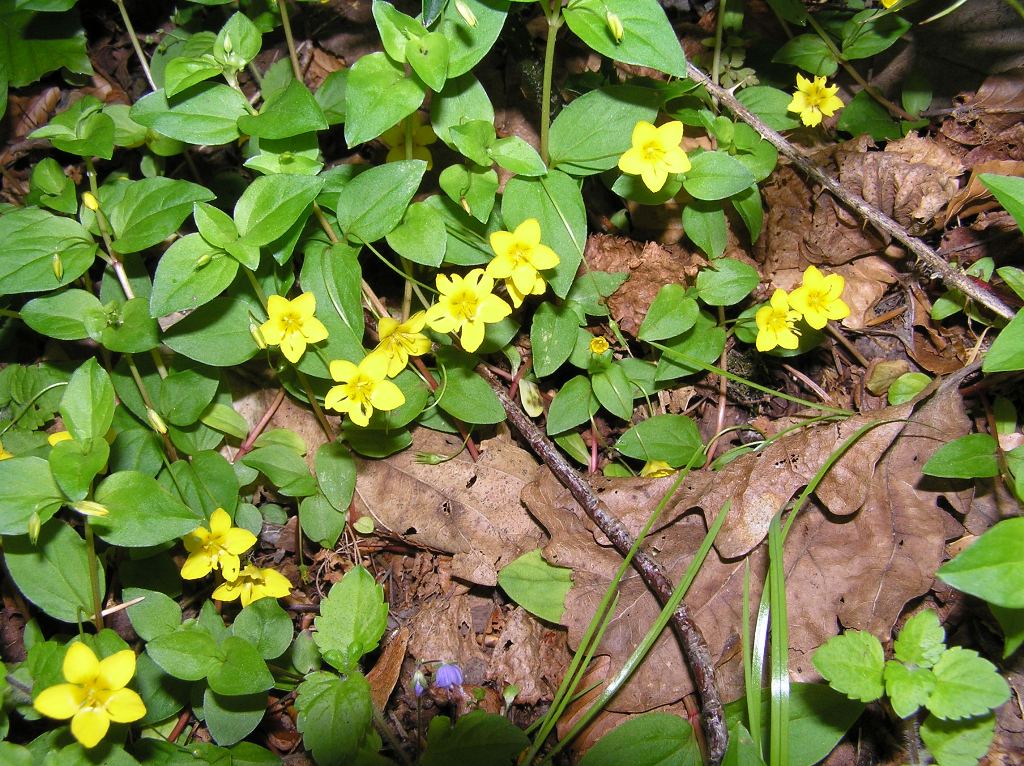
L. nemorum or Yellow Pimpernel
An evergreen perennial of herb-rich, usually deciduous, woodland; also in old hedges, glades, damp grassland, fens and marshes, and shaded gullies and cliffs in upland areas. It is typical of mesic brown earth soils kept relatively open by slope, shade, vernal herbs and disturbance, and avoids places where litter accumulates. A poor colonizer, often used as an indicator of semi-natural (or historically uninterrupted) forest.
This little plant has been used in the past as an astringent to staunch bleeding.
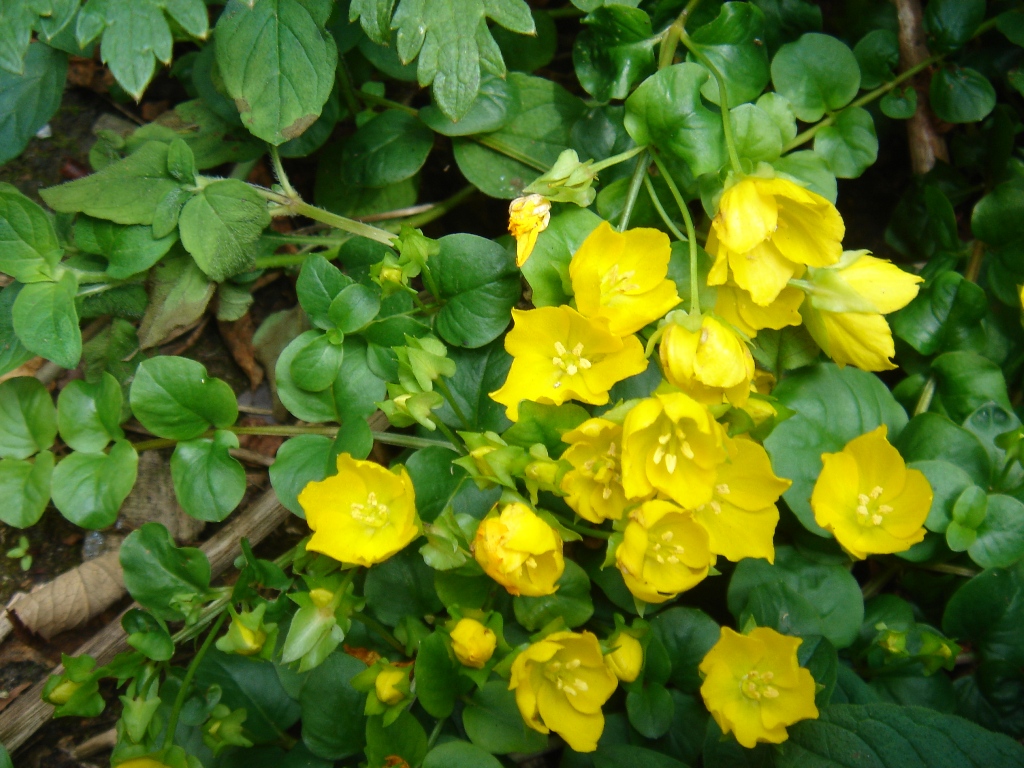
L. nummularia or Creeping-Jenny
An evergreen perennial herb of open, damp, often clay-rich soils in shaded woodland and hedges, especially the sides of streams, and damp grassland and pathsides. It can spread rapidly from stem fragments.
Due to its rapid speed of growing it makes a good groundcover in damp soil quickly! A more attractive yellow leaf form (L. nummularia ‘Aurea’) can also be grown in hanging baskets. It is also suitable as a bog garden or aquatic marginal plant and is somewhat less aggressive than the species. It has gained the Royal Horticultural Society‘s Award of Garden Merit.
A tea is made from the leaves and flowers.
Similar uses as the Yellow Loosestrife or L. vulgaris (see below) but probably more effective.
The whole herb, used fresh or dried, is antiscorbutic, mildly astringent, diuretic and vulnerary. For drying, the herb is harvested in June. Creeping Jenny is a very good wound-herb, the fresh leaves being bruised and applied externally to the affected area. An infusion is used to treat internal bleeding and diarrhoea.
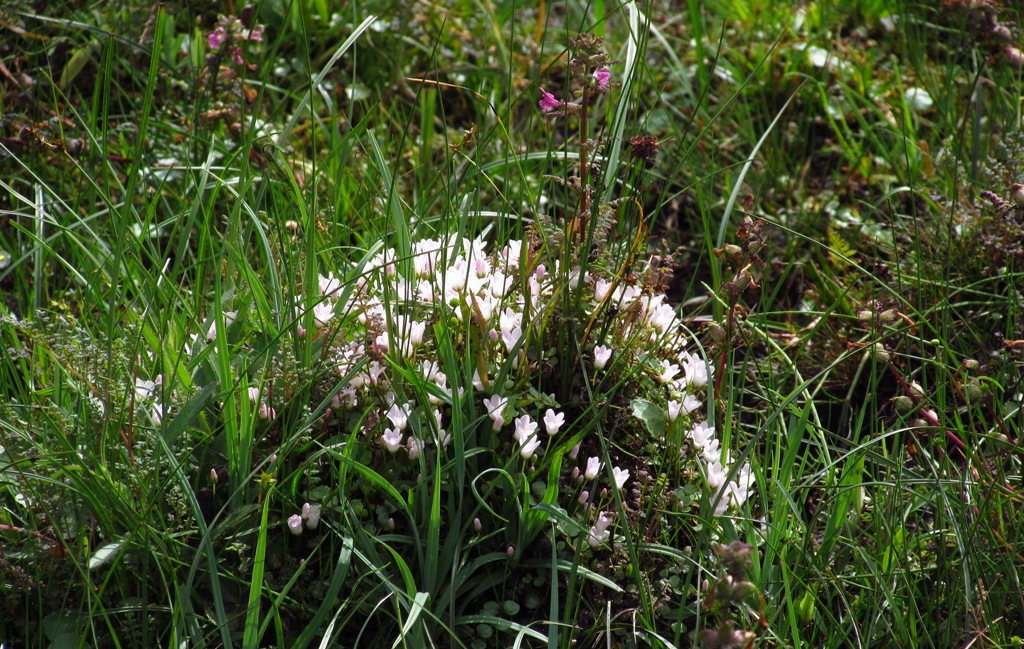
Lysimachia tenella or Bog Pimpernel
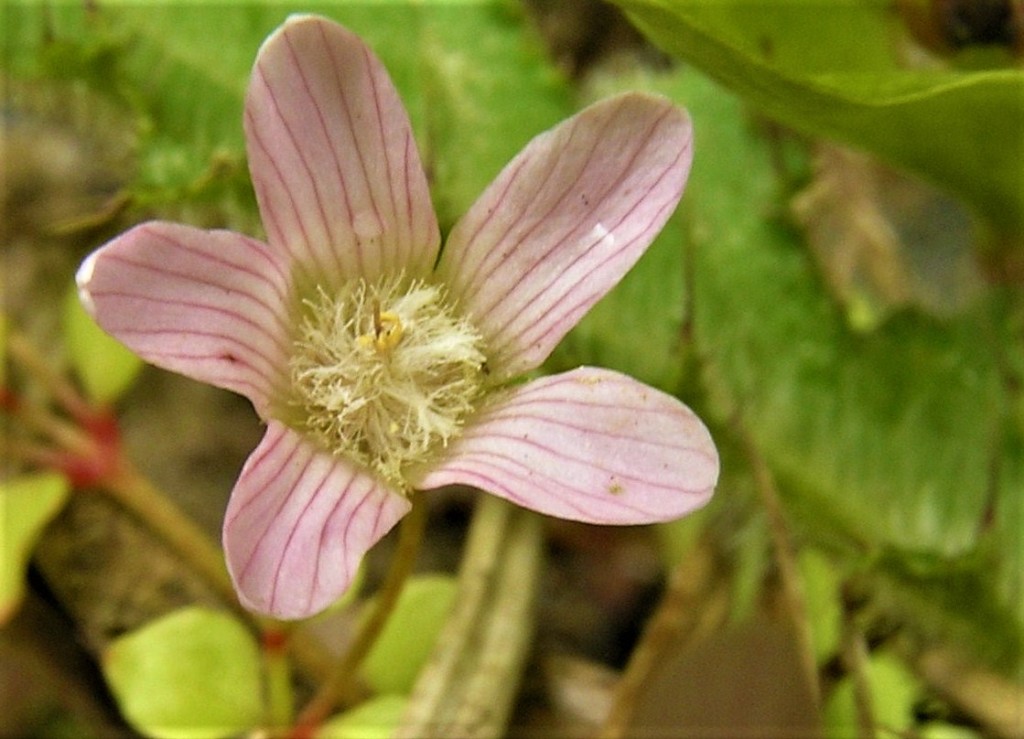
L. tenella or Bog Pimpernel (was Anagallis tenella)
A creeping, evergreen perennial of wet open sites. In southern and eastern Britain it is mostly restricted to bare soil or bryophyte mats in calcareous dune-slacks and short-sedge fens, and sometimes on acidic blanket bogs and raised mires. In western Britain and Ireland it also occurs in a variety of soligenous and peaty mires, hillside flushes and rush-pastures, relying on cattle, sheep or periodic flooding to keep sites open.
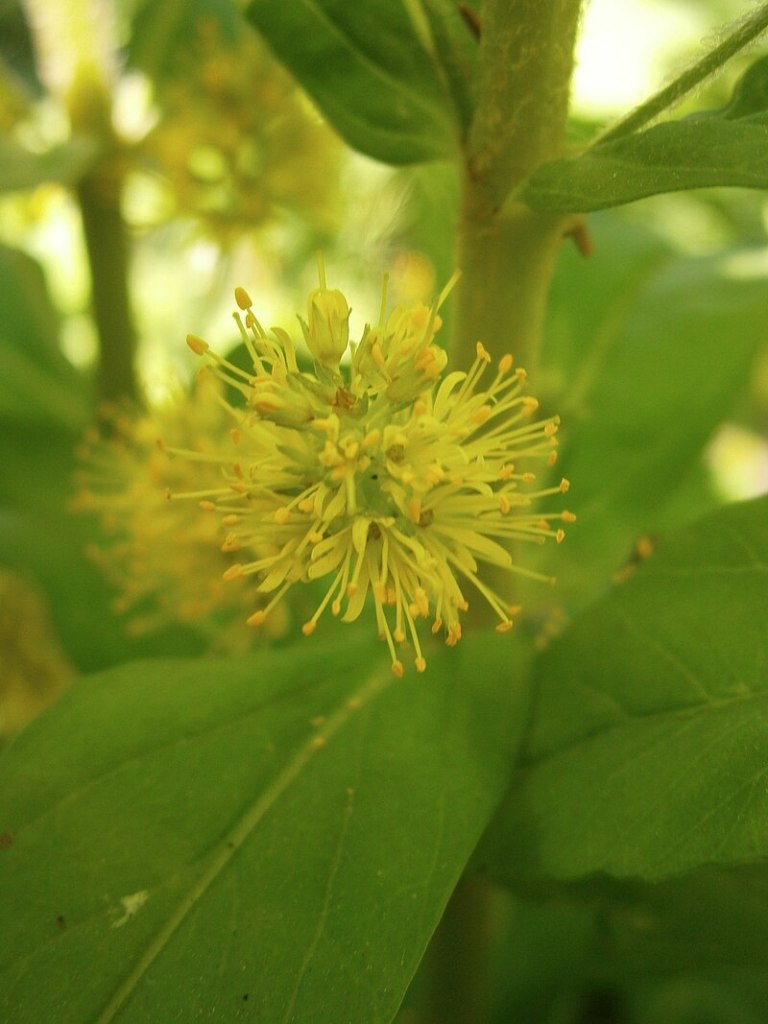
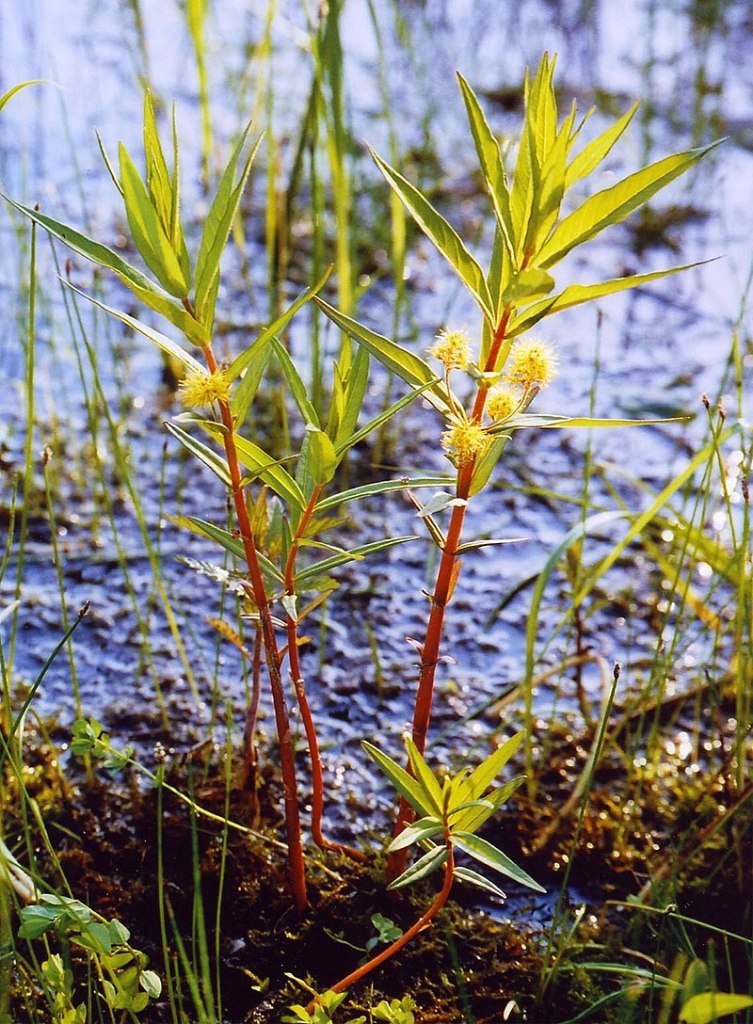
Lysimachia thyrsiflora or Tufted Loosestrife close-up and in habitat
L. thyrsiflora or Tufted Loosestrife
A perennial herb that grows in small colonies in shallow water in permanently wet places. Typical habitats are fens on the flood plains of rivers, lake margins, ditches, canalsides and, more rarely, colliery subsidence ponds.
It is a rare species in Britain, where it is found in Salix cinerea – Galium palustre wet woodland (community W1 of the British National Vegetation Classification system), Salix pentandra – Carex rostrata wet woodland (NVC community W3) and Carex rostrata – Sphagnum recurvum mire
Tufted loosestrife has been used medicinally in Asia to combat high blood pressure.
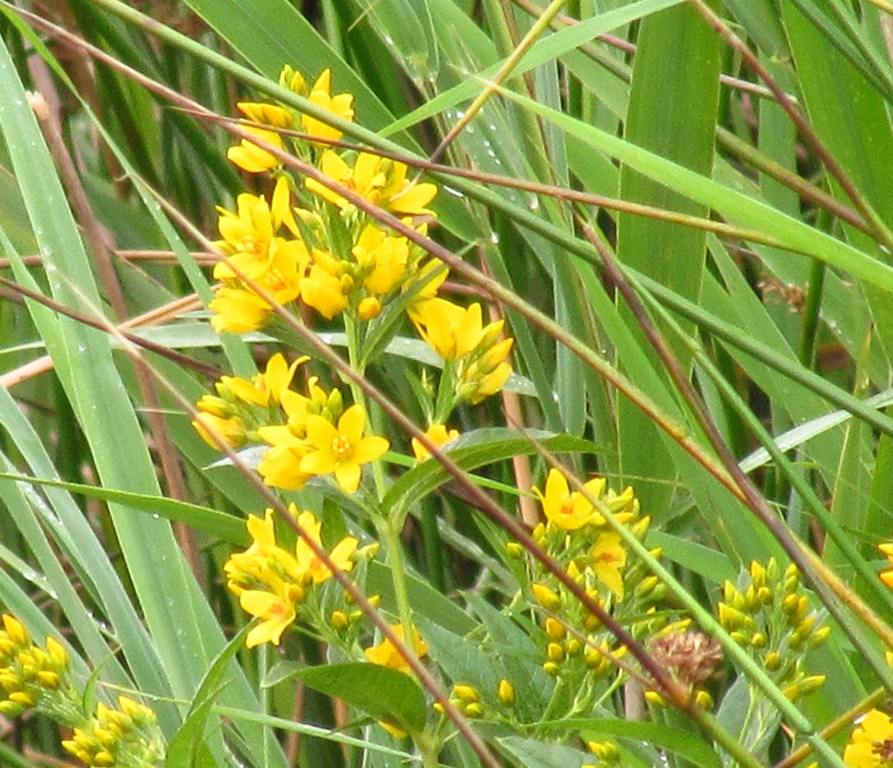
L. vulgaris or Yellow Loosestrife
A semi-evergreen perennial herb spreading vegetatively by very long thin rhizomes to form large colonies in permanently wet places on organic (less commonly, mineral) soils. Habitats include riverbanks and streamsides, marshes, tall-herb fens, fen-carr, ponds and ditches. It withstands some shade in wet open woodland.
Like many of its congeners, L. vulgaris provides an important nectar source for specialist solitary bees in the genus Macropis, especially Macropis europaea.
Can be used in the garden: A hairy perennial that forms clumps by creeping stolons or rhizomes. Leaves are ovate, green, sometimes with black dots, and occur in groups of three or four, and yellow flowers are borne in terminal clusters in summer.
Like many other plants in the genus Lysimachia, yellow loosestrife has historically been valued for its medicinal properties and is still sometimes used today in traditional folk medicine by some eastern cultures. It has been used as an effective anti-inflammatory agent as well as for treating fever, wounds, ulcers, and diarrhoea. It also has analgesic, astringent, and expectorant properties.
Also haemostatic if taken internally. Used as a mouthwash for aphthous ulcers, makes a good gargle for sore throats and is anti-diarrhoeal taken as an infusion. High in vitamin C, but this is not advised as of the presence of saponins!
Lysimachia ‘neophytes’ and ‘archaeophyte’ are:
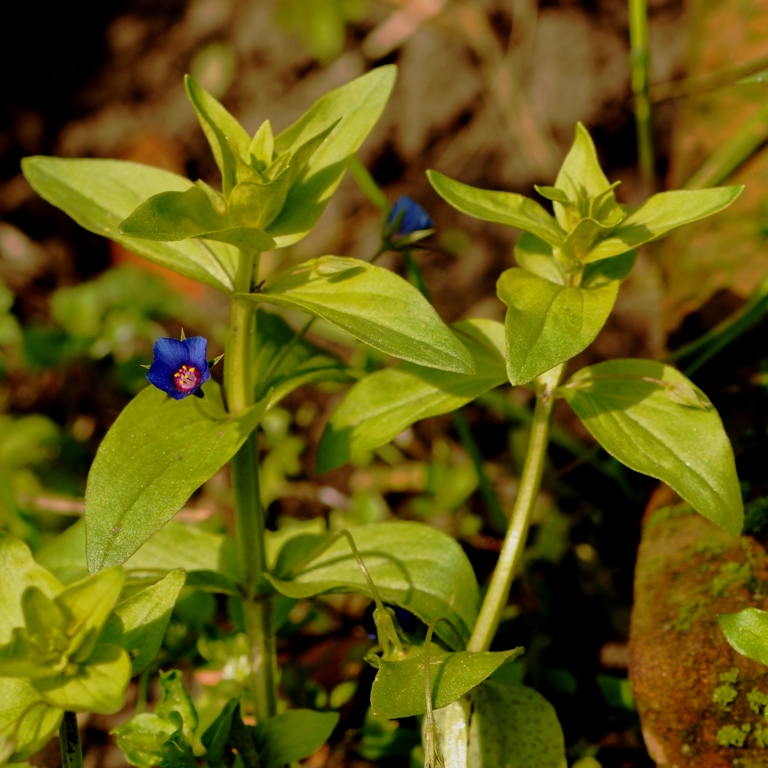
- L. foemina (was Anagallis arvensis ssp. foemina) or Blue Pimpernel (archaeophyte in B.I.; neophyte in Ireland)
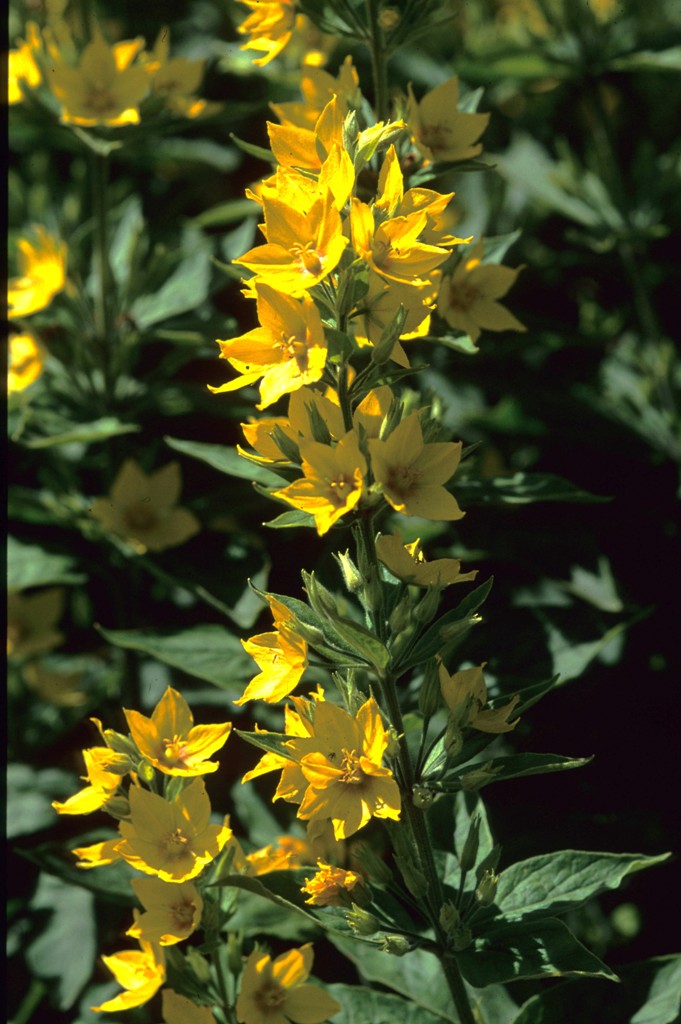
Several species of Lysimachia are taken as teas in China and Japan.
Cyclamen:
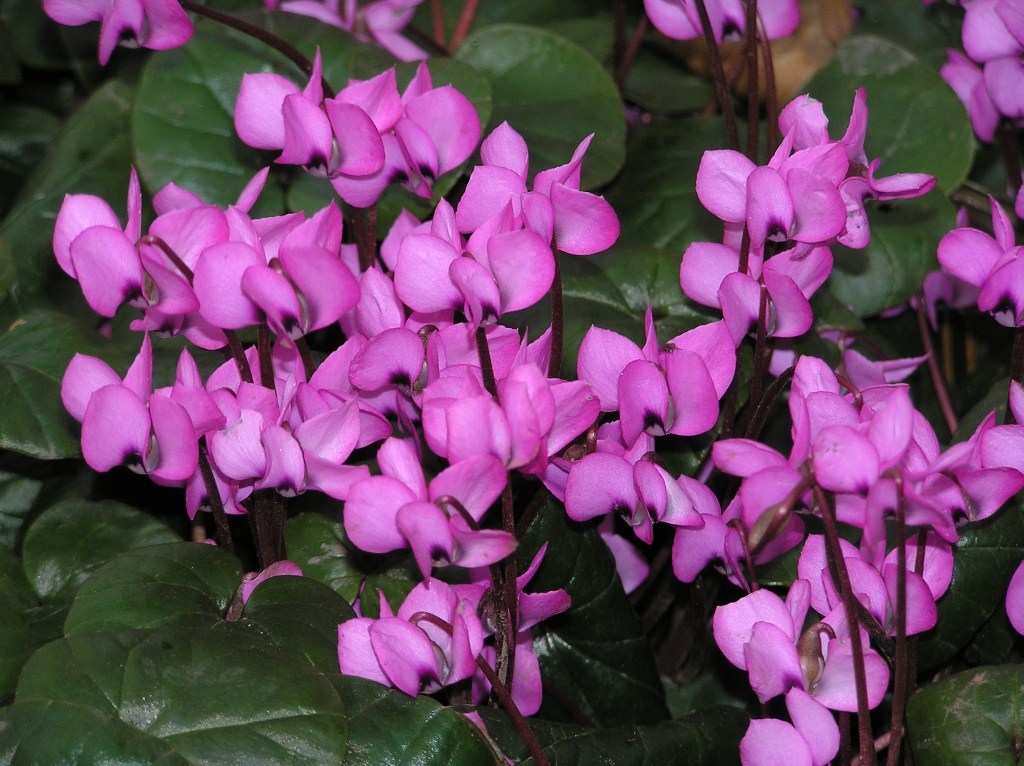
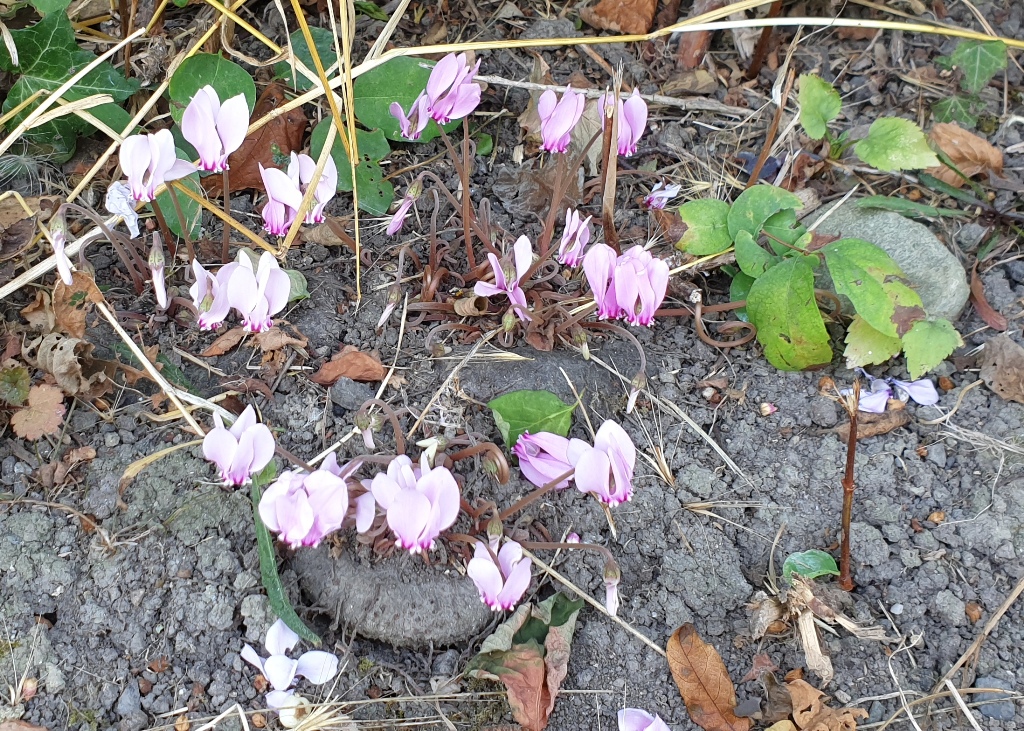
According to Henri Leclerc: if taken three times a day, it has been known to be very successful for tinnitus.
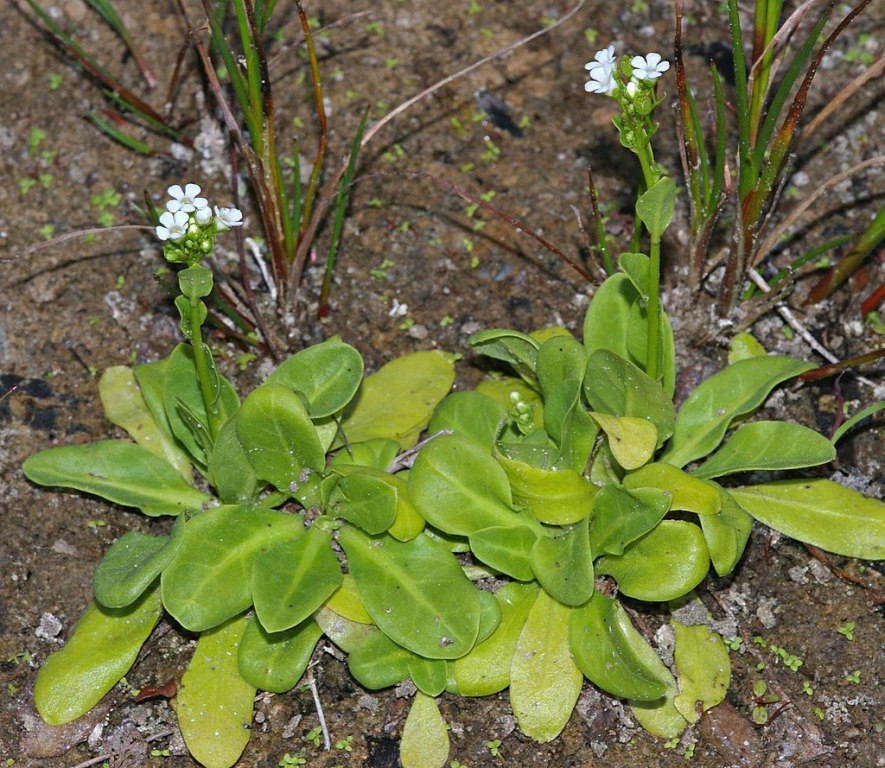
Samolus valerandi or Brookweed
A wintergreen short-lived perennial herb of permanently wet and often seasonally flooded springs, carr woodland, flushed sea-cliffs, puddles, ditches, lagoons and lake shores. In Fenland it is typical of bare soil at the water’s edge in drainage channels, as well as on open peat in fens. It is limited to very open, mesic, often calcareous or somewhat saline soils. Populations are often impermanent, colonizing the small and transient specialized habitats which change as spring lines and water levels shift. Individuals are usually monocarpic, but may take several years to flower.
Young leaves – raw or cooked. A rather bitter flavour (Ken Fern).
The leaves are antiscorbutic.
The plant’s leaves, when cut and agitated in water, produce a lather, for which reason in Palestine it has been used by the local Arab population, in former times, to launder clothes and was called by them sabūn ‘arab (= Arab soap)
The plant can be grown in ponds, bog gardens, and damp areas in the garden.
